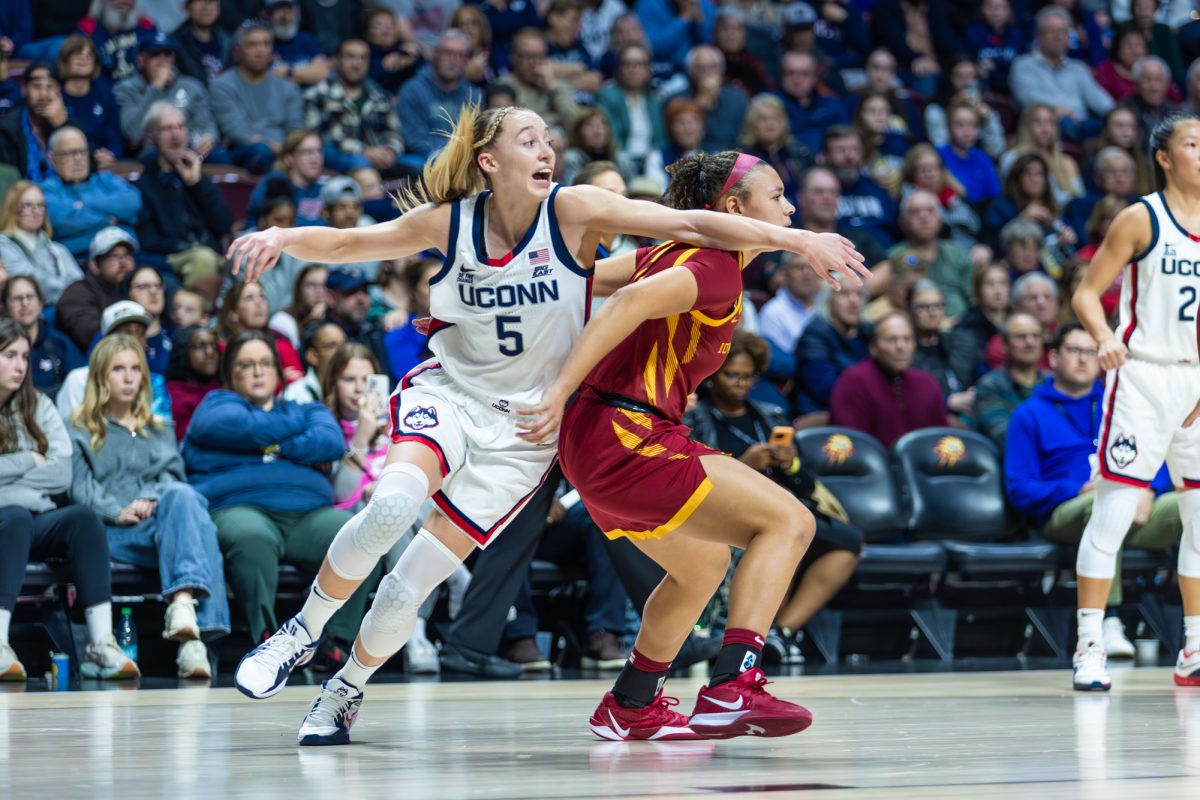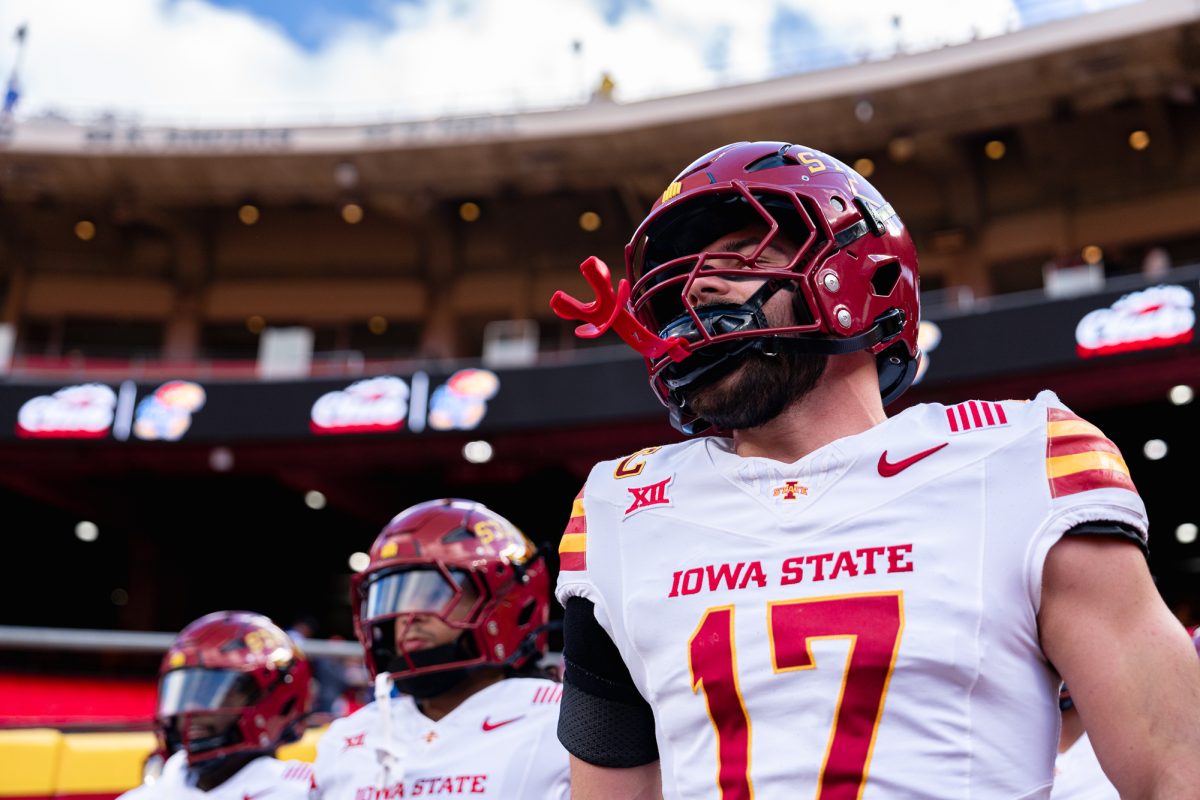LETTERS: Resources need promotion to prevent student weight gain
March 3, 2010
I’m sure that most of the students at Iowa State have heard of the dreaded “freshmen 15.” It’s a term used to describe the extra unwanted pounds that students gain their first year of college.
For some incoming students, the freshmen 15 probably freaks them out because, like most young adults, they are very self-conscious about how they appear to others.
According to www.kidshealth.org, most college students gain three to ten pounds during their first two years at college. This problem could be easily solved if Iowa State was more conscious about what it offers in the markets or dining centers and promoted health services.
Most dining facilities at Iowa State are all-you-can-eat, and that allows students to get too much food, eat too quickly and end up over eating. Judith Trumpy, a dietician on campus that works with the dining services to create the menus, said many students now feel the need to eat more food because they already paid for it, and they don’t want to waste their money. However, if students were really worried about not wasting their money, they would think about the future doctor visits, prescription drug costs and other medical bills that will come in the future if they are not conscious about their health today. Trumpy also pointed out that the dining centers made the switch to an all-you-can-eat style of service because of a trend the university noticed in how the average American family ate.
Iowa State should have considered the effects an all you can eat buffet can have on a college student’s diet before making the switch to the buffet-style of service.
Some people might think that it’s a student’s choice as to how much they eat, and they are correct to a certain extent. But with all the different options for students, they might want to try a little bit of everything and before they know itt,their tray is piled with lots of food. Some students may then feel obligated to eat as much as they can because they feel guilty for getting so much. There is also the fact that most students eat rather quickly. This makes it easier for them to overeat because they aren’t giving their head enough time to tell a stomach it’s full.
Many students like the gas station-like atmosphere of the East and West side markets because it offers them a quick fix for their hunger and they can use their dining dollars. Unfortunately, the first thing students see when they walk into the market is candy, chips and soda.
It seems as if the students are forced to play hide and seek with the few healthy options just to find them. Trumpy doesn’t think the markets are “such a good idea” by making a very valid point that “if the food isn’t there, the students won’t be so tempted to eat it.” She also doesn’t agree with the fact that the markets were created “without consulting the dieticians on staff” because they weren’t able to offer better and healthier alternatives than some of the food being offered currently.Iowa State does offer students a fairly valuable resource known as NetNutrition. It shows the students all of the nutritional information, and allows students to build a meal and see the nutritional facts for the entire meal. Unfortunately, NetNutrition is hard to find on the actual Web site. Students would have to search for it and click on three different links before they even got to NetNutrition. The site also contains false information for some meals. If a student plans a meal ahead of time, they expect the items they chose on NetNutrition to be served in the dining center. However, there have been quite a few times when the food options on the site did not match up with what was actually being served. Iowa State needs to take the time to make the website easier to navigate and more accurate. Also, if they put information about NetNutrition in the table tents, which many students read, they could easily promote this resource.
ISU also offers free appointments with dieticians and nutritionists. In the real world outside of college, a one hour session with a nutritionist can cost up to $130. Therefore, it would be wise for students to take advantage of this service. However, Trumpy stated that “some days hardly anyone comes to see me, so I just have to sit here.” This just goes to show that some students don’t even know this resource is even available. Therefore, the resources, as helpful as they might be, do absolutely no good because they aren’t known about and utilized by many of the students and even some members of the faculty here at Iowa State.
Trumpy has thought about “putting the information about NetNutrition and dieticians in orientation packets” to make freshman more aware of the resources available right from the start. Another good way to promote valuable resources to the students would be to post fliers in the dorms and even in the dining centers themselves. Iowa State University could even send out informational e-mails just telling students about the resources, how to use them and provide contact information to ask questions if they have any.
After doing this research, I decided to ask my friends if they knew any information and NetNutrition and dietary services.
Out of the twelve friends that were with me at dinner that night, none of them knew about the free dietary services offered by Iowa State, and only three of them knew anything about NetNutrition. This just goes to show that Iowa State should think about spending a little more time promoting its resources and services, and make better decisions about what to make accessible to students in the markets around campus.
Megan Kirkpatrick is an open option freshman.






